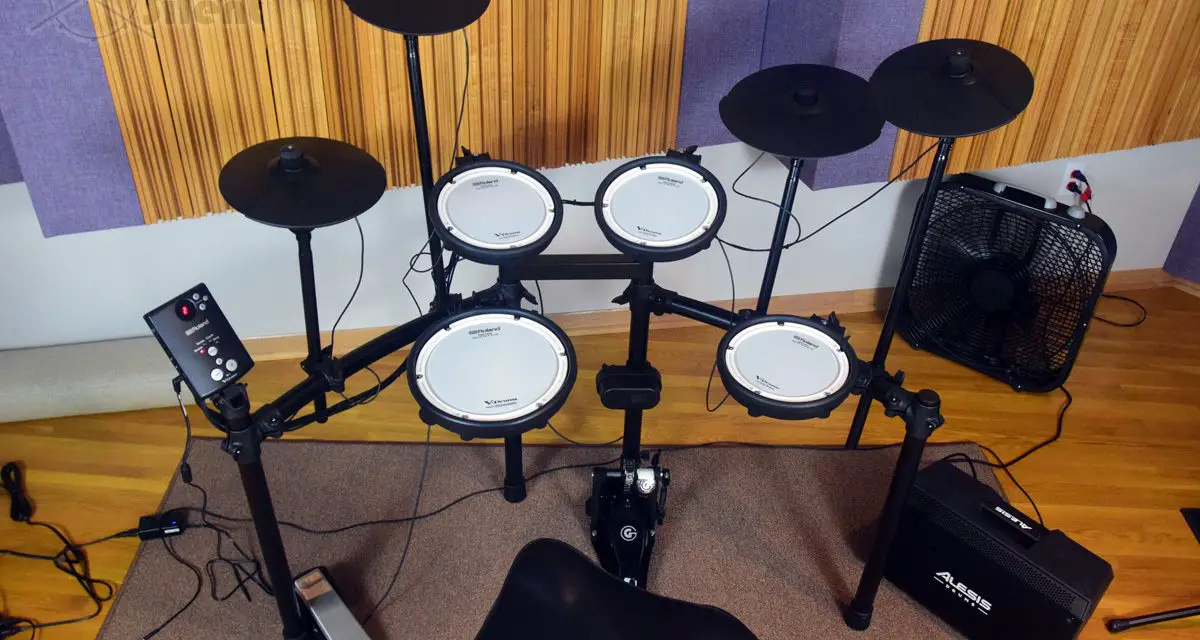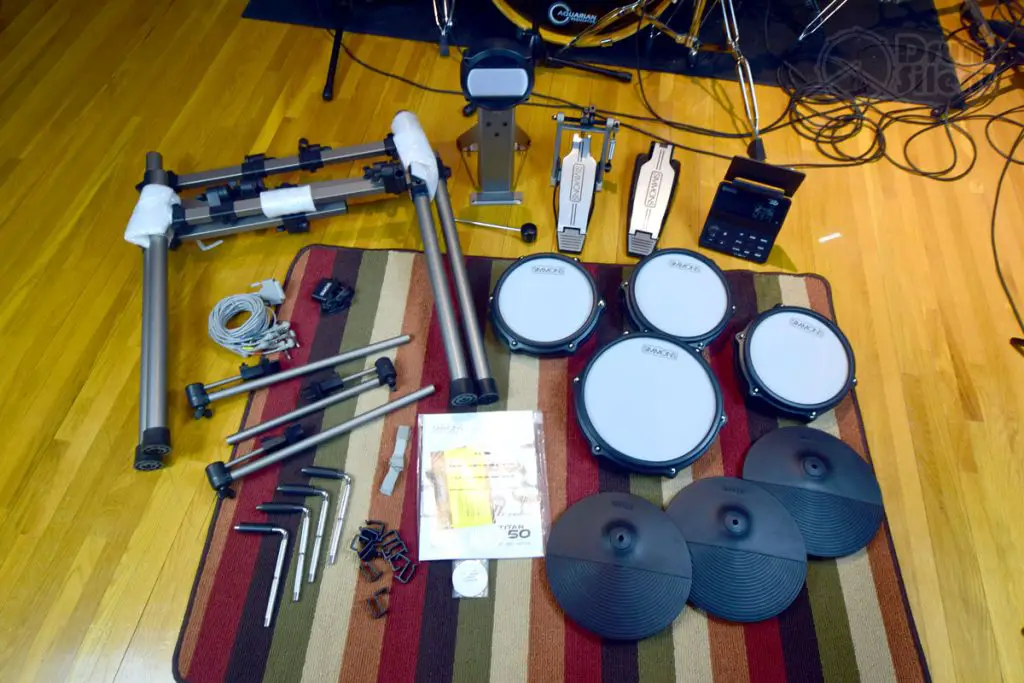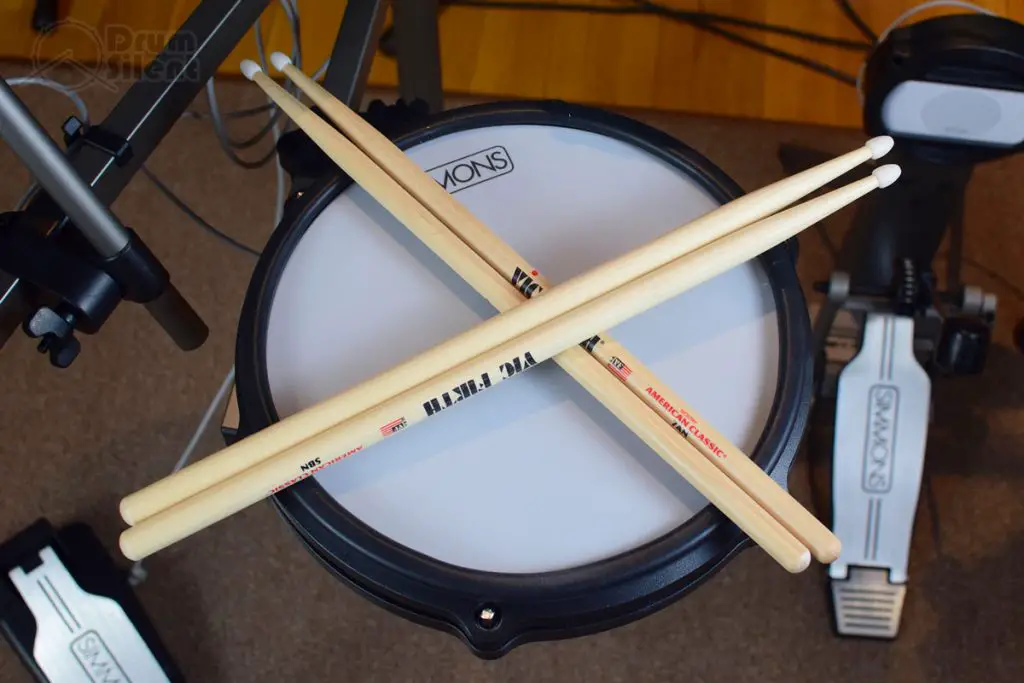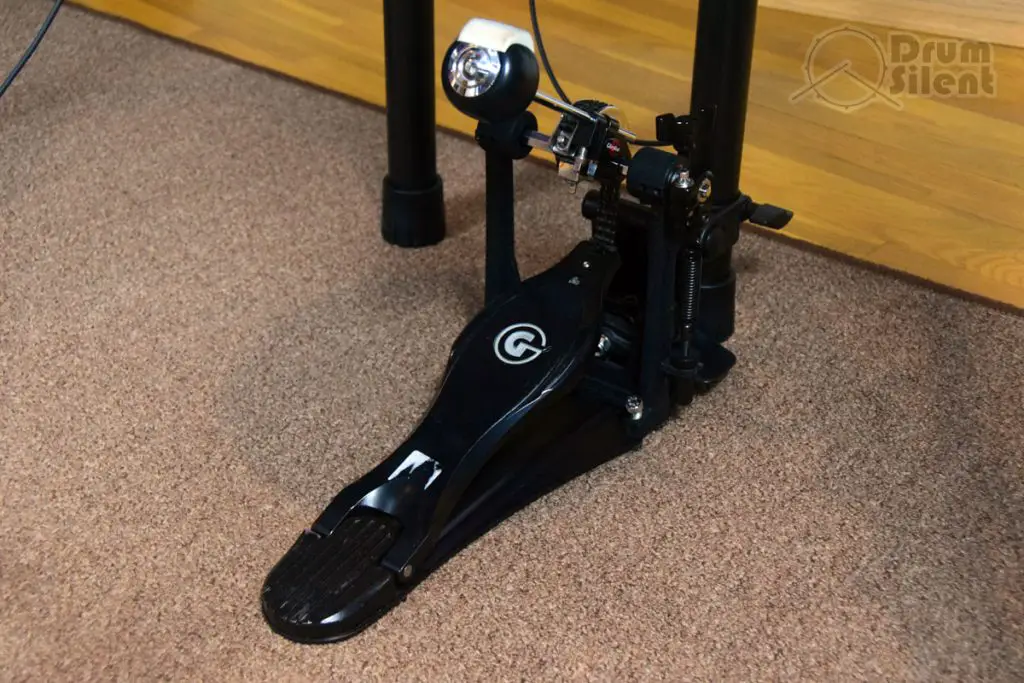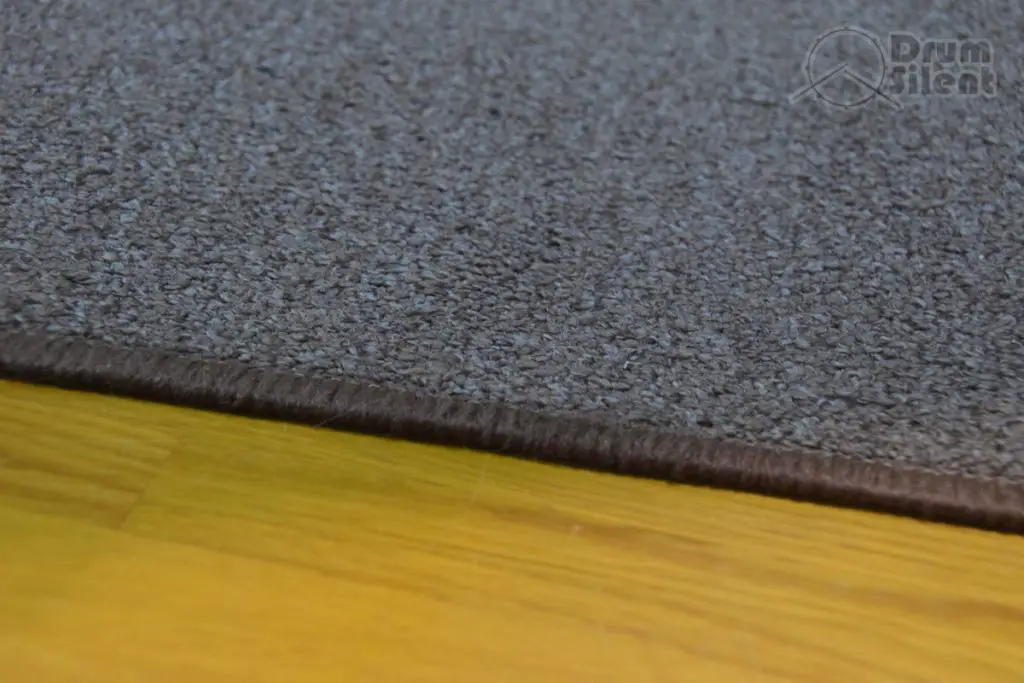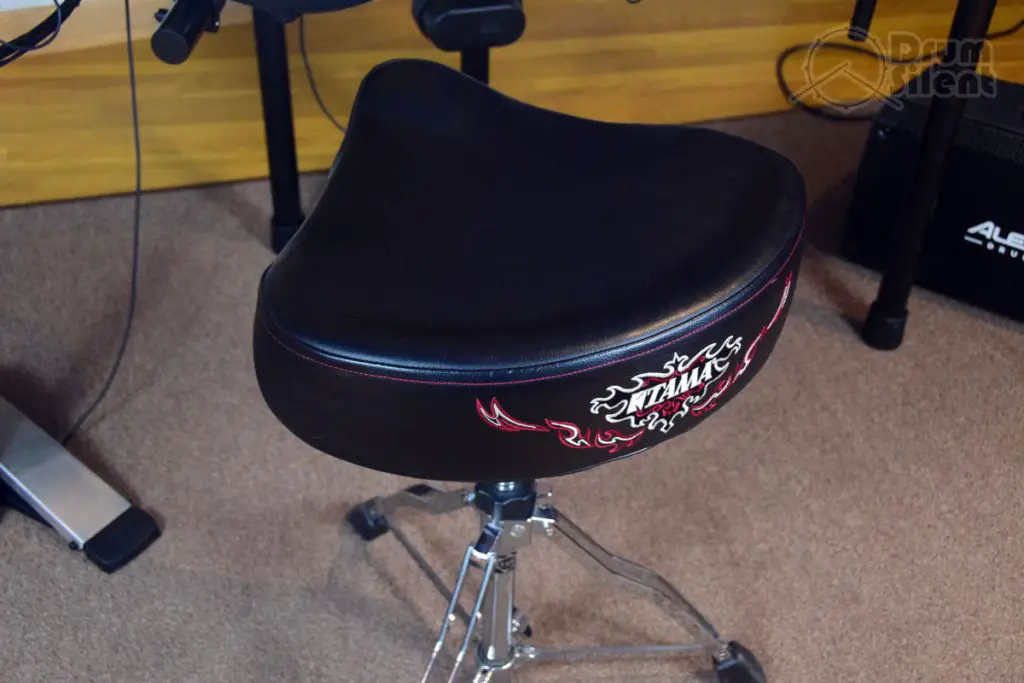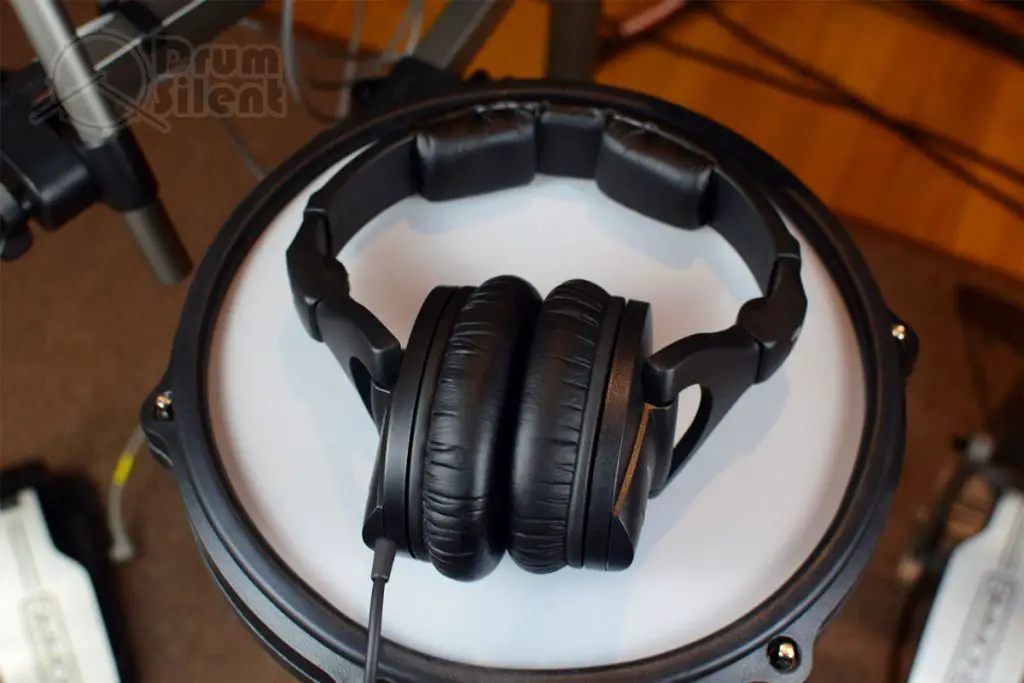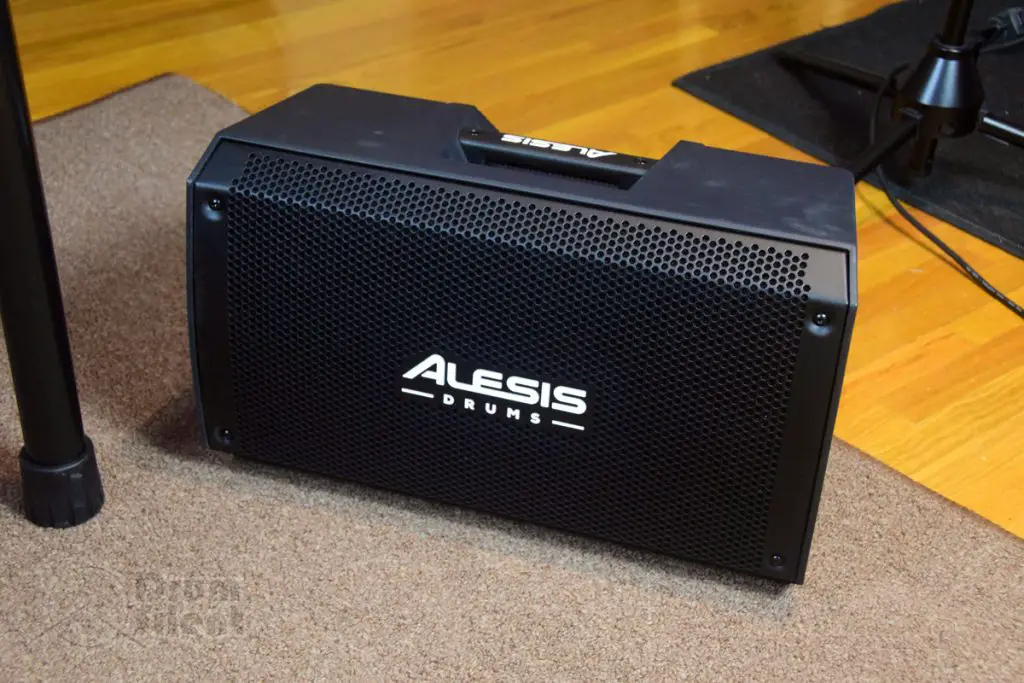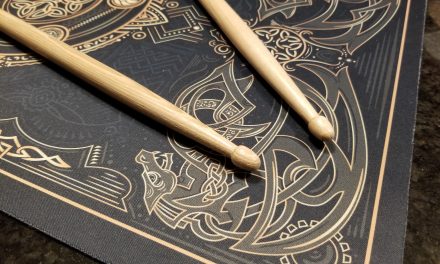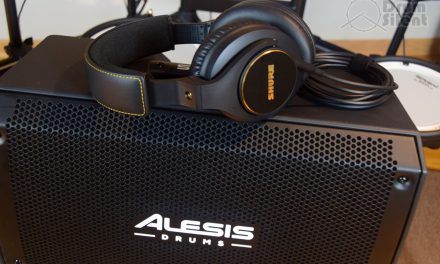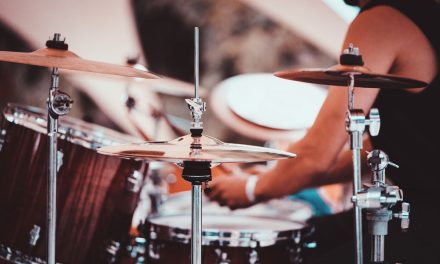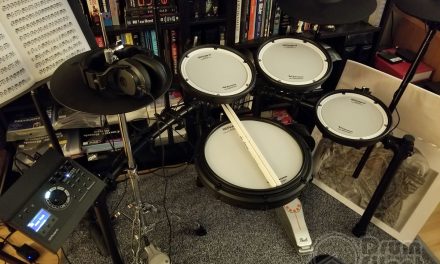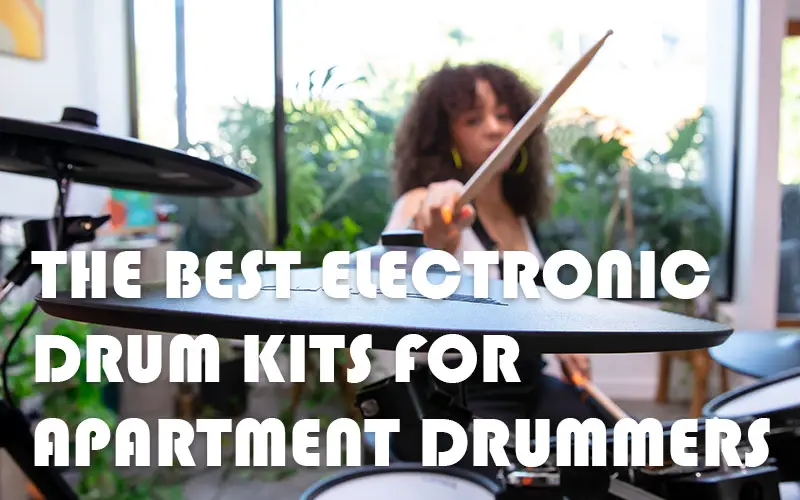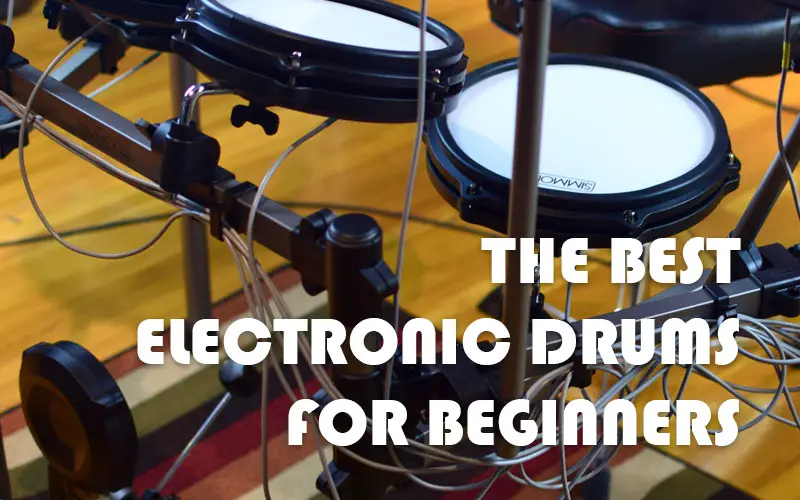In addition to the electronic drum kit itself, there are some other things you might need depending on your goals as a drummer. Let’s take a look at some things that you will need to play electronic drums.
What Comes With a Typical Electronic Drum Kit?
If you are going to be picking up an electronic drum kit, it might include a few accessories, but it probably won’t have everything you need to sit down and start playing. All kits will include the rack, pads, cables and drum module. Most will also include a drum key and some drum sticks. Some beginners kits will include a kick pedal, but most intermediate to advanced kits won’t.
That’s a good start, but a few things are missing.
What Other Drum Accessories Or Gear Will You Need?
Some of these things are optional, but this list should give you a good idea of what else you might need to start using your electronic drum kit.
Drum Sticks
Some kits include a pair of sticks, and most times they’ll probably be basic 5B sticks. It could be worth it to pick up some vinyl tipped drum sticks or your preferred type of stick if you already have some favorites. We have some recommended drum sticks for electronic drums. Remember to use new, undamaged sticks on your kit to help preserve the pads.
Kick Drum Pedal
Unless you’re purchasing a beginner level drum kit, chances are it won’t include a kick pedal. There are a lot of options out there for kick pedals and that could be an entire discussion on it’s own. A cheaper kick drum pedal, if purchased new, can be had for less than a hundred bucks.
Drum Kit Rug
A good drum rug can be important if you don’t have carpeted floors. Setting up either an acoustic or an electronic drum kit on a hard floor is not ideal. Stuff will slide around and you’ll have a hard time keeping things in place. Drum pedals will often have spurs, velcro or other materials on the bottom to keep them from sliding around on carpeting or rugs.
As far as a rug goes, I prefer to use the thicker, sturdier types of rugs that stay flat and don’t bunch up while they are laying on the floor. For bonus points, you can use tape to mark out on the rug where to place different parts of your kit, making it easier to set it back up the same if you move it around.
Drum Throne
I very rarely see electronic drum kits that include a throne. Most likely you’ll need to buy one separately. A sturdy, comfortable drum throne is ideal, especially if you plan on practicing or playing a lot. It can be worth it to invest a little more into a good drum throne, since budget drum thrones can be uncomfortable.
Headphones
You’ll need some way to hear the drum module, and most kits don’t include headphones. Many beginner drummers will just use what they have on hand, maybe some ear buds or headphones that they already own. We have some headphone recommendations for electronic drummers as well if you aren’t sure where to start looking.
Speakers
Speakers are another option. You can hook your electronic drum kit up to anything that has audio inputs and speakers, so that opens up a lot of options. Electronic drum manufacturers such as Alesis, Roland and Simmons all offer monitor speakers specifically for electronic instruments and drums if you want to go that direction.
Advanced Options For Electronic Drumming Gear
So far we’ve covered the basics – the stuff you will most likely need to start playing a drum kit after getting it setup. There are some other things to consider as you advance and want to look at expanding your sound capabilities.
Smartphone or Tablet for Apps
Many modern drum modules are starting to offer apps that can be used to control settings and features within the drum modules. Depending on what type of kit you have, it might have iOS or Android apps available. It can be fun to try these out since they can sometimes open up more settings beyond what you are able to do with the hardware interface on the module.
Laptop or Computer
If you want to expand the sound capabilities of your drum kit beyond the sounds that are in the module, hooking up to a laptop or computer can really open up a lot of options. You can use your drum kit as a controller for software such as EZ Drummer to play a completely new set of professional, studio recorded kits. You can also use a computer to record either audio or MIDI from your drum module. Many modern drum modules have the ability to output individual audio tracks over USB for recording into a DAW for multi-track recording.
Personal Goals as a Drummer
Beyond all the gear you’ll need to get started, it’s also good to have some personal goals as a drummer to help keep you focused when sitting at the kit. More experienced drummers will already have this figured out for the most part, but it’s a good thing for beginners to understand.
If you’re just starting out, it’s good to set smaller goals to help move you along. Sit down and make a list of things you want to be able to do – techniques you want to learn, patterns you want to be able to play, stuff like that. Keep working on things that are within your grasp until you add it to your repertoire and then move onto the next thing. If you are taking lessons, your instructor can help provide some good direction here and keep you accountable from week to week as you learn new things.
It’s good to have a fun goals along with not so fun goals to keep things interesting. Learning rudiments might not be the most fun thing for some drummers, so make sure to mix up your practice sessions by tackling something more interesting like beats you enjoy or songs you want to learn to play along with.

